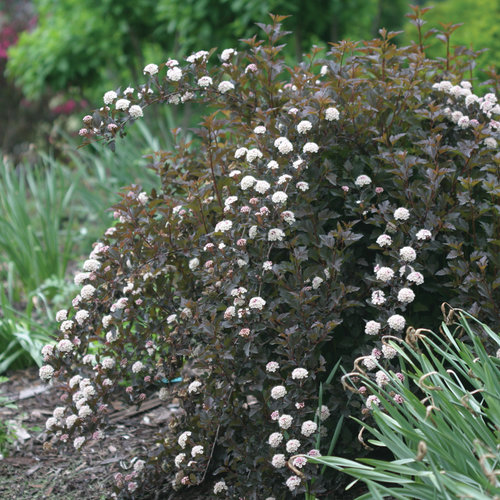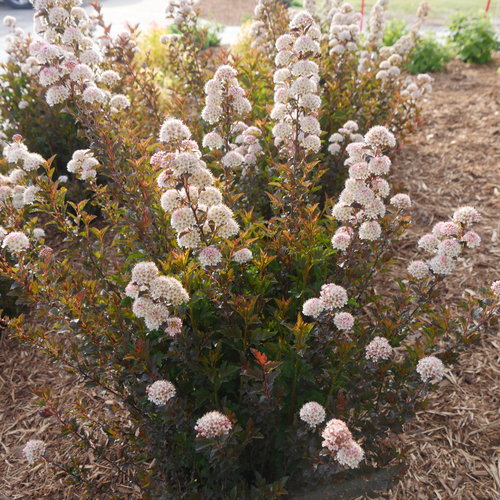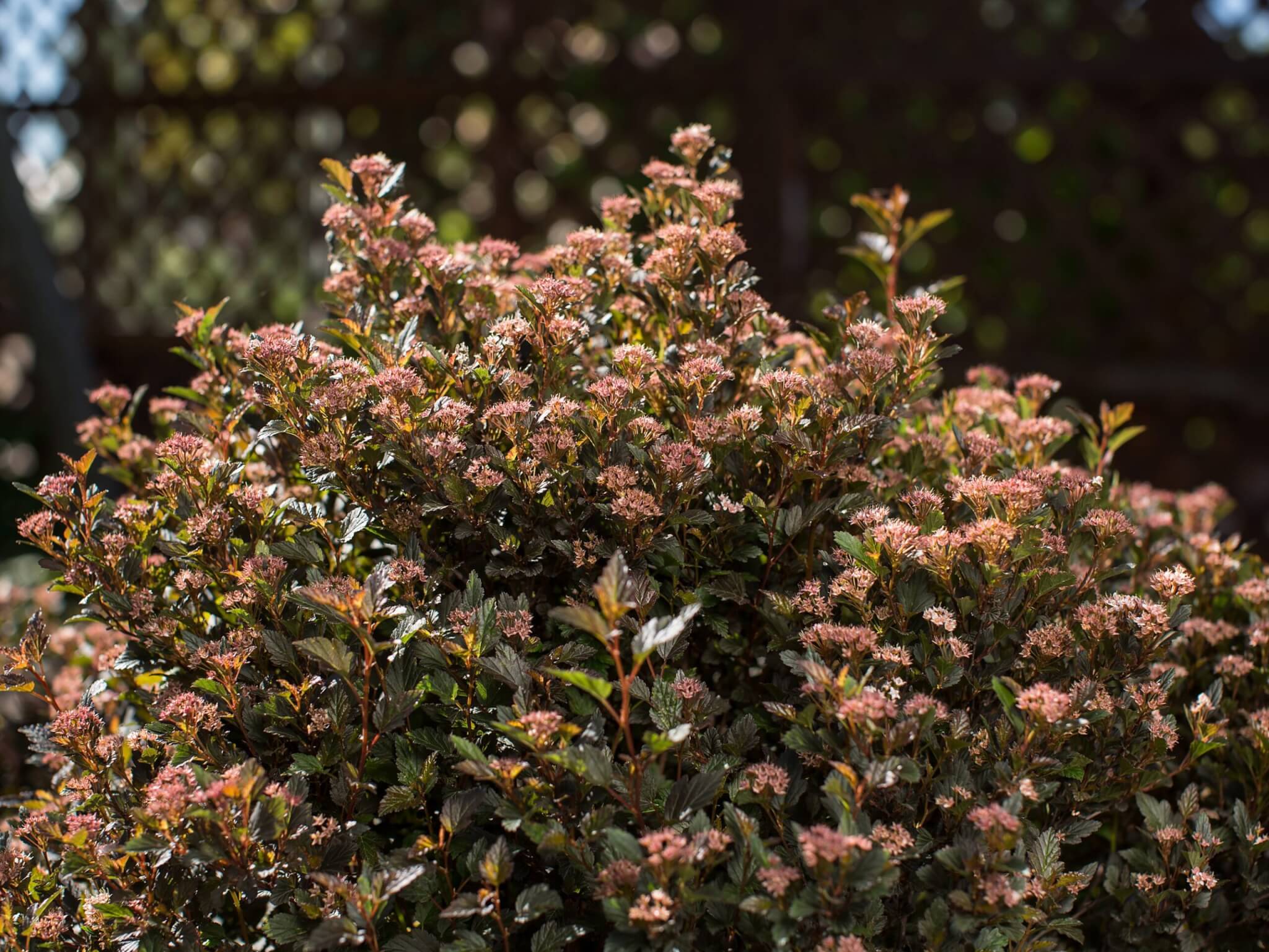How To Care For Your Wine Ninebark Shrub
Wine ninebark (Physocarpus opulifolius 'Summer Wine') is a beautiful and versatile shrub that can add a touch of color and interest to any landscape. It is known for its large, showy clusters of white flowers that bloom in early summer, as well as its attractive foliage that turns a deep wine red in the fall. Wine ninebark is relatively easy to care for, but there are a few things you can do to keep it looking its best.
Planting
Wine ninebark can be planted in full sun to part shade. It prefers moist, well-drained soil, but it is also tolerant of drier conditions once established. If you are planting in a sunny location, make sure to choose a site that gets some afternoon shade to protect the leaves from burning.
When planting, dig a hole that is twice as wide and as deep as the root ball of the shrub. Amend the soil with some compost or other organic matter. Place the shrub in the hole and backfill with soil, tamping it down gently. Water the shrub well after planting.
Watering
Wine ninebark needs regular watering, especially during the first year after planting. Once established, it is more drought-tolerant, but it will still benefit from deep waterings during hot, dry weather. Water the shrub deeply once a week, or more often if the weather is very hot or dry.
Fertilizing
Wine ninebark does not need to be fertilized heavily. A light application of an all-purpose fertilizer in the spring will help to promote new growth and flowering. You can also add a layer of mulch around the base of the shrub to help retain moisture and suppress weeds.
Pruning
Wine ninebark does not require a lot of pruning. However, you may want to trim it back in the spring to remove any dead or damaged branches. You can also prune it to shape it or to control its size. If you want to encourage more flowers, you can prune the shrub after it blooms in the spring.
Winter Care
Wine ninebark is hardy in USDA zones 3-8. It does not need any special winter care, but you may want to protect it from wind and snow if you live in an area with harsh winters. You can do this by wrapping the shrub with burlap or other protective material.
Diseases and Pests
Wine ninebark is generally resistant to pests and diseases. However, it can be susceptible to powdery mildew, especially if it is planted in a shady location. If you see powdery mildew on your shrub, you can treat it with a fungicide.
Conclusion
Wine ninebark is a beautiful and easy-care shrub that can add a touch of color and interest to any landscape. With a little basic care, you can enjoy this shrub for many years to come.
If you are interested in learning more about wine ninebark, I recommend visiting the Home Gardening. This website has a wealth of information about this versatile shrub, including its care, cultivation, and potential uses. You can also find photos and illustrations of wine ninebark, as well as links to other resources.
FAQ of wine ninebark
- What is wine ninebark?
Wine ninebark (Physocarpus opulifolius 'Seward') is a deciduous shrub that is native to North America. It is known for its beautiful wine-colored leaves, which emerge in the spring and turn a deep burgundy in the fall. Wine ninebark is also a fast-growing shrub, reaching heights of up to 8 feet. It is hardy in USDA zones 3-7 and can tolerate a wide range of soil conditions.
- How do I grow wine ninebark?
Wine ninebark is relatively easy to grow. It prefers full sun to partial shade and well-drained soil. It is drought-tolerant once established, but it does benefit from regular watering during the first year after planting. Wine ninebark does not require a lot of fertilizer, but it can be fertilized in the spring with a balanced fertilizer.
- When should I prune wine ninebark?
Wine ninebark can be pruned in the spring or fall. However, spring pruning is recommended, as it will encourage new growth with excellent leaf color. To prune wine ninebark, simply cut back the branches by about one-third to one-half. This will help to maintain the shrub's shape and size.
- Does wine ninebark have any pests or diseases?
Wine ninebark is generally resistant to pests and diseases. However, it can be susceptible to powdery mildew, especially if it is planted in humid conditions. If powdery mildew does occur, it can be treated with a fungicide.
- What are some other benefits of wine ninebark?
In addition to its beautiful foliage, wine ninebark also produces small white flowers in the spring. These flowers are followed by red berries in the fall. Wine ninebark is also a good choice for attracting pollinators to the garden.
- Where can I buy wine ninebark?
Wine ninebark is available for purchase at most garden centers. It can also be purchased online from a variety of retailers.









Post a Comment for "How To Care For Your Wine Ninebark Shrub"